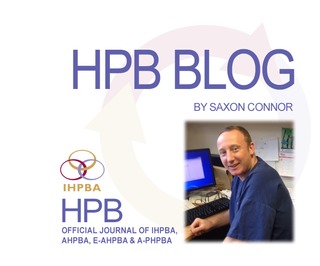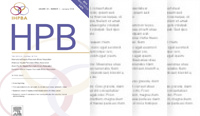International Hepato-Pancreato-Biliary Association
HPB Blog, September 2016

In this month’s issue of HPB it is nice to see an editorial and leading article from international experts. In the era of articles going to early view and social media many question the value of a monthly issue. However these articles highlight the added value a monthly issue can bring.
In the editorial by Pruvot and Truant the topic of the functional future liver remnant is addressed. The authors highlight the emerging role of hepatobiliary scintigraphy (HBS) based on the article in this issue of HPB by Cieslak et al. For those performing extended or major resections on those patients with impaired parenchymal function HBS would appear to increase the accuracy with which post operative liver failure can be predicted. Alongside this is an article by Toine et al which compares two commercial liver volumetry software programmes highlighting the time saved if iNtuition® is used.
The leading article by Professor Tanaka is a follow up to his excellent plenary presentation at the recent IHBPA world congress. It addresses and discusses the importance of follow up in those patients with asymptomatic branch duct IPMN. This is a highly controversial area especially given the recent recommendation of the AGA guidelines on this topic which recommend discontinuing follow up after 5 years of stability. Professor Tanaka raises concerns with such an approach and outlines reasons why. Clearly this needs assessed in context of local health care resources. There is however hope on the horizon as a randomised trial is currently underway in Japan with outcomes expected to be reported by 2019. This trial should hopefully help answer many of the unknowns particularly the true rate of malignant transformation in patients with these neoplasms.
In this issue of HPB three papers report on outcomes following biliary surgery. Jackson et al describe outcomes for 320 patients undergoing hepaticojejunostomy following iatrogenic bile duct injury. In this series 25% of patients developed morbidity and 13% developed a critical care complication. A critical care complication was more likely to occur in older patients with higher ASA. Kirks et al report on 61 patients following iatrogenic bile duct injury and compared early vs. late repair showing no differences in outcomes. Nakanishi et al describe the outcomes for over 200 patients undergoing hepatic surgery for biliary malignancy. As is evident from in the editors highlights there is much to be learnt from this paper.
Saxon Connor
Click here for the table of contents
Corporate Partners
If you are interested in becoming a Corporate Partner of the IHBPA please contact industry@ihpba.org
Find out more


